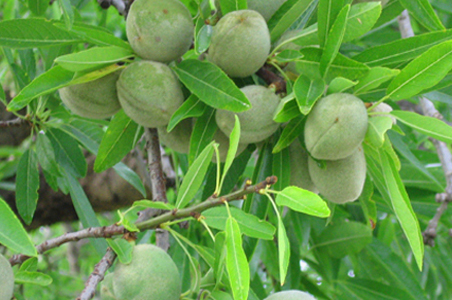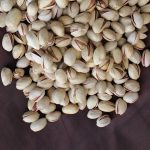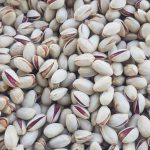Familiarity with how to plant almonds / Nutex co

Familiarity with how to plant almonds – Read this article to know how to plant almonds and weather conditions.
Almond flowering season

After the amount of cold required by the almond trees is provided, the flowering buds gradually change due to the ambient temperature and the decolonization begins gradually.
Under equal conditions, cultivars that need a lot of cold and the required amount of cold does not reach them enough do not change and their flowers start to open later.
Therefore, the flowering date depends on the climatic conditions and depending on the weather conditions, the flowering date may fluctuate from ten days to several weeks each year.
Take care of the almond tree

Water your seedlings generously during the first year. Soak it once a week during the summer. You can also give your seedlings a standard booster in the spring.
Check your seedlings from time to time for pests such as aphids or leaf-chewing insects, such as worms. You can control the pests if necessary with standard insecticidal soaps. Almonds produce very sweet blooms in the spring to attract bees for pollination.
So do not worry if there are many bees around your tree; This is what you and your plant want to happen.
There is a fungal infection that may affect the almond tree. If your plant is infected with this fungus, the leaves of your plant will turn brown and curl upwards. If this happens to your tree, remove the infected leaves immediately and discard.
Burning these leaves is also a good idea, so the fungi can not spread. Collect any infected leaves around your plant with a rake. If you can not control the fungal infection, you may need to spray your tree with borax (a common antifungal treatment for fruit trees and walnut trees).
Almond tree benefits from short and regular pruning, but it is dangerous to do it incorrectly. Improper pruning can kill these trees. So it’s best to ask a professional to do this, and if you want to do it in your own future, be trained for the first time while he or she is doing it.
Suitable lands for almonds:
Factors such as depth, soil texture and field position in terms of late spring frosts, rainfall and its seasonal distribution, temperature, strong monsoon winds during flowering, relative humidity, altitude, drainage status, slope and direction of soil, soil fertility Soil pH (6-7-5) is involved in the selection of places for planting almonds in large meadows, riverbeds, small and large depressions that have severe cold and frost. It is not suitable for growing almonds on the hills.
Almond tree is one of the most resistant trees to drought and has deep and penetrating roots.
Suitable soil for almonds:
Suitable soil is formed by atmospheric factors and phenomena affecting minerals and organic matter and as a result of physical and chemical processes and biological interactions of plants, the constituents of which are organic matter, air, water, microorganisms, minerals from the decomposition of mother rocks. Its food sources are provided from organic and mineral sources in the soil. Its frequency depends on the chemical condition of the soil.
The limiting factor in the roots of trees is the physical factor of the soil, not the chemical factors of the soil.
Almonds are elusive to heavy-textured soils. Almonds are also elusive to moisture and in wetlands with the accumulation of water with slow growth, reduced yield and short life, almonds have little resistance to soil salinity and is one of the least resistant trees to soil salinity.
Familiarity with how to plant almonds Familiarity with how to plant almonds












 NUTEXCO HEAD OFFICE
NUTEXCO HEAD OFFICE Te
Te Email:
Email: